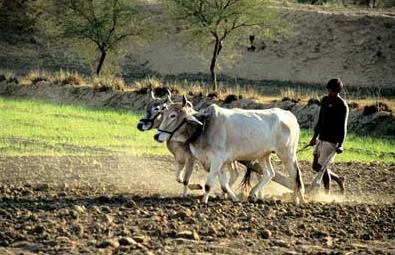At the U.S. Sheep Experiment Station in Dubois, Idaho, research leader Greg Lewis and his colleagues have shown that ultrasound could significantly improve the speed and accuracy of selective breeding methods. Producers currently rely on visual appraisals to predict carcass traits before choosing which sheep to breed. Ultrasound provides a faster, more accurate alternative.
Ultrasound technology routinely used to accurately predict characteristics that indicate carcass yield and value in cattle and swine can also be used in live sheep, Agricultural Research Service (ARS) scientists and cooperators have found.
To test the reliability of the technology, the team took ultrasound images of 172 lambs before slaughter. Henry Zerby, an assistant professor at Ohio State University, coordinated the collection of carcass trait data for the lambs. Lewis and Dave Notter, a geneticist at Virginia Tech, collaborated to analyze the data.
The scientists found that a trained technician can capture an ultrasound image in about 30 seconds with reasonable accuracy. The images can then be used to estimate traits that influence the carcass value of market lambs. Such traits include loin muscle area, loin muscle depth and back-fat thickness.
Although initially more expensive than visual appraisals, the superior accuracy of ultrasound may translate into better economic returns through improved evaluation and selection of breeding stock. According to Lewis, ultrasound is an excellent way for breeding-stock producers to get the data they need to make selection decisions.
Reliable predictions save breeders valuable time, allowing for educated decision making about an animal’s offspring without waiting for the offspring to mature.
Ultrasound technology routinely used to accurately predict characteristics that indicate carcass yield and value in cattle and swine can also be used in live sheep, Agricultural Research Service (ARS) scientists and cooperators have found.
To test the reliability of the technology, the team took ultrasound images of 172 lambs before slaughter. Henry Zerby, an assistant professor at Ohio State University, coordinated the collection of carcass trait data for the lambs. Lewis and Dave Notter, a geneticist at Virginia Tech, collaborated to analyze the data.
The scientists found that a trained technician can capture an ultrasound image in about 30 seconds with reasonable accuracy. The images can then be used to estimate traits that influence the carcass value of market lambs. Such traits include loin muscle area, loin muscle depth and back-fat thickness.
Although initially more expensive than visual appraisals, the superior accuracy of ultrasound may translate into better economic returns through improved evaluation and selection of breeding stock. According to Lewis, ultrasound is an excellent way for breeding-stock producers to get the data they need to make selection decisions.
Reliable predictions save breeders valuable time, allowing for educated decision making about an animal’s offspring without waiting for the offspring to mature.

